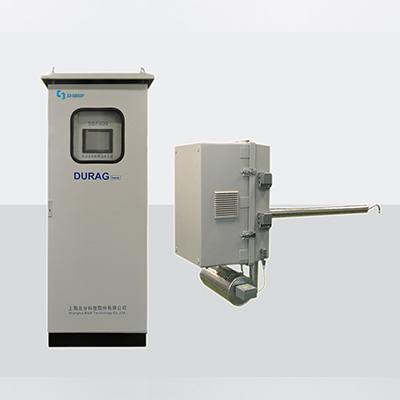
What has been the effect of the Air Pollution Prevention and Control Action Plan (hereinafter referred to as the "Ten Atmospheric Rules") since its implementation? Recently, the Secretariat of China Clean Air Alliance, together with a number of environmental experts, analyzed the improvement of air quality in China and key regions from 2013 to 2015 on the basis of public data such as China Environmental Status Bulletin, provincial and municipal environmental status bulletins, and statistical annual reports.
The analysis shows that since the implementation of the "Ten Measures for the Atmosphere", the urban air quality in China has generally improved. The annual average concentrations of fine particulate matter (PM2.5), inhalable particulate matter (PM10), nitrogen dioxide (NO2), sulfur dioxide (SO2) and carbon monoxide (CO) (CO is the 95th percentile of the daily average) and the rate of exceeding the standard have decreased year by year, and the days of heavy pollution in most cities have decreased year by year.
In 2015, the average concentration of PM2.5 in 74 key cities nationwide was 55 micrograms/m3, down 23.6% from 72 micrograms/m3 in 2013; The proportion of days with daily average value exceeding the standard decreased from 33.2% in 2013 to 20.8% in 2015. A total of 846 days (times) of severe pollution and 238 days (times) of severe pollution occurred in 74 key cities, with a decrease of 28.1%, 24.9%, 49.9% and 63.7% compared with 2014 and 2013, respectively.
The results of retrieving PM2.5 pollution from satellite data show that the overall level of PM2.5 pollution in China has decreased significantly, while the PM2.5 pollution in some regions has slightly increased with ultra-low emission dust meter. PM2.5 pollution in the Pearl River Delta region has improved significantly; The annual average concentration of PM2.5 in Beijing, Tianjin and Hebei and its surrounding areas decreased significantly, but the pollution was still serious; Tianjin, Hebei, Shandong, Shanxi, Jiangsu, Zhejiang and Chongqing have all reached the decline target in 2017 ahead of schedule, while Beijing and Shanghai still have a certain gap. The regional pollution at the junction of Inner Mongolia, Jilin and Liaoning provinces is slightly increasing year by year.

The data shows that the annual average concentration of PM2.5 in Beijing, Tianjin and Hebei and surrounding areas has a significant downward trend, but the pollution is still serious. More than half of the cities have exceeded the standard (the annual average concentration of PM2.5 is more than 70 micrograms/m3). In 2015, only Zhangjiakou reached the standard.
In 2015, the five cities with serious pollution were Baoding, Liaocheng, Xingtai, Dezhou and Hengshui in turn. Baoding, Xingtai and Hengshui in Hebei ranked among the five cities with serious pollution for three consecutive years, while Liaocheng and Dezhou in Shandong Province entered the "top five", which should be paid attention to.
At the same time, Henan Province, which has joined the joint prevention and control of air pollution in Beijing, Tianjin and Hebei and the surrounding areas, had an annual average concentration of PM2.5 of 80 micrograms/m3 in 2015, which caused serious pollution.
The pollution degree of PM2.5 in the Yangtze River Delta region has improved year by year. Compared with the Beijing Tianjin Hebei region, the pollution level of PM2.5 in the Yangtze River Delta region of the ultra-low CEMS system is relatively low. In 2015, there was no city with PM2.5 exceeding the standard by more than twice, but only Zhoushan City met the standard. Hefei has been a seriously polluted city in the Yangtze River Delta region for the past three years since the promulgation of the Ten Principles of Atmosphere.
In the past three years, PM2.5 pollution in the Pearl River Delta has improved significantly. In 2015, Huizhou, Shenzhen, Zhuhai, Zhongshan and Jiangmen reached the standard, which is more than the other three key regions. From 2013 to 2015, Zhaoqing, Guangzhou and Foshan have always been three cities with serious PM2.5 pollution in the Pearl River Delta.
From the comparative analysis of the annual average concentration of PM2.5 from 2013 to 2015 and the control objectives in 2017 in 10 provinces (cities)/regions other than Inner Mongolia in the key areas of PM2.5 pollution control, it can be seen that the annual average concentration of PM2.5 in Beijing, Tianjin, Hebei, Shanxi, Shandong, Jiangsu, Zhejiang, the Pearl River Delta and Chongqing in the key areas decreased by 11.34% compared with that in 2014, Compared with 10 (cities)/regions in 2014, the average decrease in 2013 was equivalent to 11.92%. Among them, Hebei and the Pearl River Delta witnessed a large drop of 19%; The decrease in Beijing was small, 6.2%. However, the average annual concentration of PM2.5 in Shanghai increased slightly in 2015.
Source: China Environment News